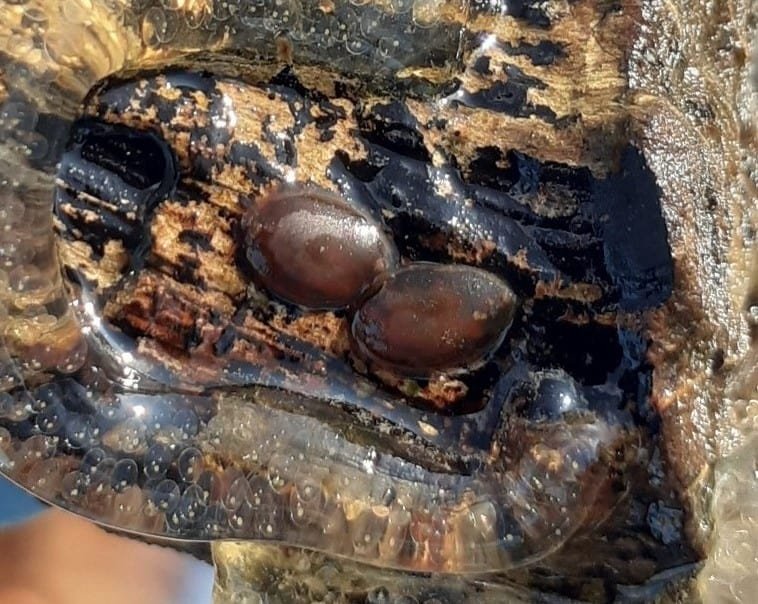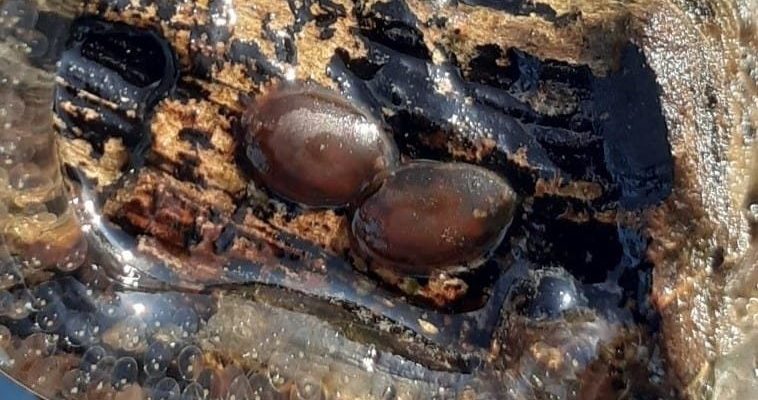
Think of it like trying to spot a needle in a haystack. Leeches come in various shapes, colors, and sizes, which makes identification tricky. You might find yourself squinting at a muddy puddle, trying to determine if that wiggling thing is a leech, a worm, or something else entirely. So, let’s dive deeper into the world of these fascinating creatures and discuss why recognizing them can be challenging.
Different Types of Leeches You Might Encounter
Understanding the different types of leeches can help you identify them more easily. There are more than 700 species of leeches around the world, but most fall into one of three main categories: bloodsucking, predatory, and detritivorous leeches.
Bloodsucking Leeches
The most infamous type is the bloodsucking leech. You probably know them from movies or survival shows. They have a specialized mouth that can attach to a host and extract blood. In North America, the common horse leech (*Hirudo verbana*) is often seen in wet environments.
Predatory Leeches
On the other hand, predatory leeches feed on small invertebrates. They tend to have a more elongated shape and can be quite active. With sharp jaws, they capture their prey in a way that’s more akin to a miniature monster than the bloodsuckers we usually think of.
Detritivorous Leeches
Lastly, detritivorous leeches are nature’s recyclers, feeding on organic matter in the water. They help break down debris, making them essential for a healthy ecosystem. Often smaller and less noticeable, they can blend in easily with their surroundings, making identification more challenging.
Physical Features to Look For
When trying to identify a leech in the field, there are several physical features to consider. Each type of leech has unique characteristics that set them apart.
Body Shape and Size
Leeches come in various shapes and sizes, which can make identifying them tricky at first glance. For instance, bloodsuckers often have a rounded, flat body. In contrast, predatory leeches might be more elongated. Depending on the species, they can range from a couple of centimeters to over a foot long!
Color Patterns
The color of a leech can also help with identification. Some are greenish or brown, blending seamlessly with their muddy environment, while others may have striking patterns. It’s worth taking a moment to observe how their colors and textures change in different lighting, which can help distinguish them from other slimy critters.
Movement and Behavior
Observing how a leech moves can provide significant clues. Bloodsucking leeches often move slowly, gliding along surfaces in search of a host, while predatory leeches are more active, darting around as they hunt for food. If you see something moving rapidly, it might be a predatory species rather than the familiar bloodsucker.
Environmental Factors That Complicate Identification
Now, let’s talk about where you might find leeches and how these environments complicate identification. Leeches thrive in wet, humid conditions, often found near ponds, swamps, or damp forests. This isn’t exactly a serene setting; it can be muddy and overgrown, making your job as an identifier even trickier.
Visibility Challenges
When you’re knee-deep in mud or foliage, visibility can be a significant challenge. Leeches can easily camouflage themselves among leaves, twigs, or sediment. It’s easy to mistake them for a piece of plant or a piece of debris. If you don’t have a clear view, you’re likely to misidentify what you’re looking at.
Seasonal Variations
Another complicating factor is seasonal variations. Leeches are more active during warmer months. They might be less visible or even hibernate during colder seasons, so if you’re looking in the wrong season, you might not see them at all.
Water Conditions
Water quality can also play a role. Leeches prefer clean water, so in polluted areas, you may find fewer of them. If you’re in an area with stagnant water that’s full of nutrients, however, you might see a surge in leech populations. This variability can make it tough to predict where to find them.
Misidentification: Common Mistakes
Misidentifying leeches is easy, especially if you’re a beginner.
Wiggly Worms vs. Leeches
One of the most common mistakes is confusing worms with leeches. While both can wiggle and squirm, worms typically have a more segmented appearance and lack the suction cups that leeches possess. If you see something wiggling in the mud, take a moment to check for those characteristic features: the sucker mouth and the overall body shape.
Lookalikes: Salamanders and Other Creatures
Sometimes, creatures like small salamanders or other amphibians might be in the vicinity. At a quick glance, their movements and shapes can appear similar to leeches, especially when they’re swimming or diving under the surface. Paying attention to finer details could save you from mistake.
Seasonal Confusion
As mentioned earlier, seasonal changes can also lead to misidentification. If you’re looking for leeches during the cold months, you might instead stumble upon their hibernating counterparts. Knowing the season and the behavior of leeches can help you identify what you see correctly.
Tips for Successful Identification in the Field
Identifying leeches in the field can be challenging, but with a few tips in mind, you can enhance your success rate.
Use a Field Guide
Bringing a field guide can help immensely. Look for resources specific to your region that detail local leech species. A guidebook often includes pictures and descriptions to help distinguish between types.
Observe Carefully and Take Notes
Take your time when you spot something. Observing leeches in situ can lead to better identification. Try jotting down notes about their environment, behaviors, and any distinctive features you notice.
Reach Out to Experts
If you’re still unsure, consider reaching out to local wildlife groups or online forums. There are plenty of enthusiasts and experts who’re more than happy to help with identification questions. It’s a great way to learn more and connect with fellow nature lovers.
Field identification of leeches can be tricky—but it’s also fascinating. By understanding the different types of leeches, their physical characteristics, and the environmental factors that complicate identification, you’ll feel more equipped to recognize these creatures in their natural habitats. So, the next time you venture out and spot a wiggly silhouette in the water, remember: it’s not just a leech; it’s a part of our ecosystem, deserving of a little respect and curiosity. Happy spotting!

